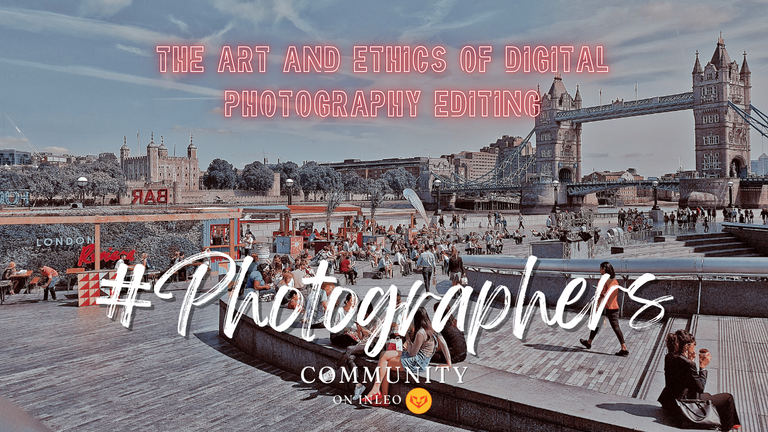The Art and Ethics of Digital Photography Editing
In today's rapidly evolving world of digital photography, editing has become a crucial part of the photographic process. As photographers, embracing these changes and understanding the implications can enhance both creativity and professionalism. Here’s a guide to navigating the modern landscape of digital photography editing.

Come share your Photos on INLEO
The Evolution of Digital Photography
Technological Advancements: Photography has undergone a transformation with the development of sophisticated cameras and editing software. This technology allows for unprecedented creative control and expression.
From Darkroom to Desktop: Editing, once confined to darkrooms, is now accessible to anyone with a computer, democratizing the art form and expanding possibilities.
Photo Editing as a Modern Art Form
Creative Expression: Editing enables photographers to enhance their images, highlight specific elements, and create a unique visual narrative.
Artistic Techniques: Through manipulation of color, lighting, and composition, photographers can transform ordinary images into extraordinary works of art.
Tools and Techniques
Software Choices: Popular editing tools like Adobe Photoshop, Lightroom, and other apps provide a wide range of functions for photo manipulation.
Techniques to Explore:
- Color Grading: Adjusting the color tones to convey mood or style.
- Cropping and Composition: Refining the framing to improve visual impact.
- Retouching: Enhancing details or removing imperfections.
Ethical Considerations
Balancing Act: While editing allows for creativity, it's essential to maintain the authenticity and truth of the image.
Truth vs. Manipulation: Photographers should consider the ethical implications of altering images, especially in journalism or documentary photography.
Impact on the Photography Industry
Raising Standards: With digital editing, the expectations for image quality and creativity have increased, pushing photographers to hone their skills.
Expanding Opportunities: New editing capabilities have opened up avenues in commercial photography, art, and media.
Future Trends
Emerging Technologies: AI and machine learning are set to revolutionize editing by automating tasks and offering innovative tools for creativity.
Continuous Learning: Staying updated with the latest trends and technologies will keep photographers at the forefront of their field.
Conclusion
Digital photography editing is not just a technical skill but an art form that offers endless possibilities for creativity. By understanding and embracing this aspect of photography, you can enhance your work, stay competitive, and ethically represent the world through your lens. Always strive for a balance between creativity and authenticity, and keep pushing the boundaries of what’s possible with your photography.
Posted Using InLeo Alpha

